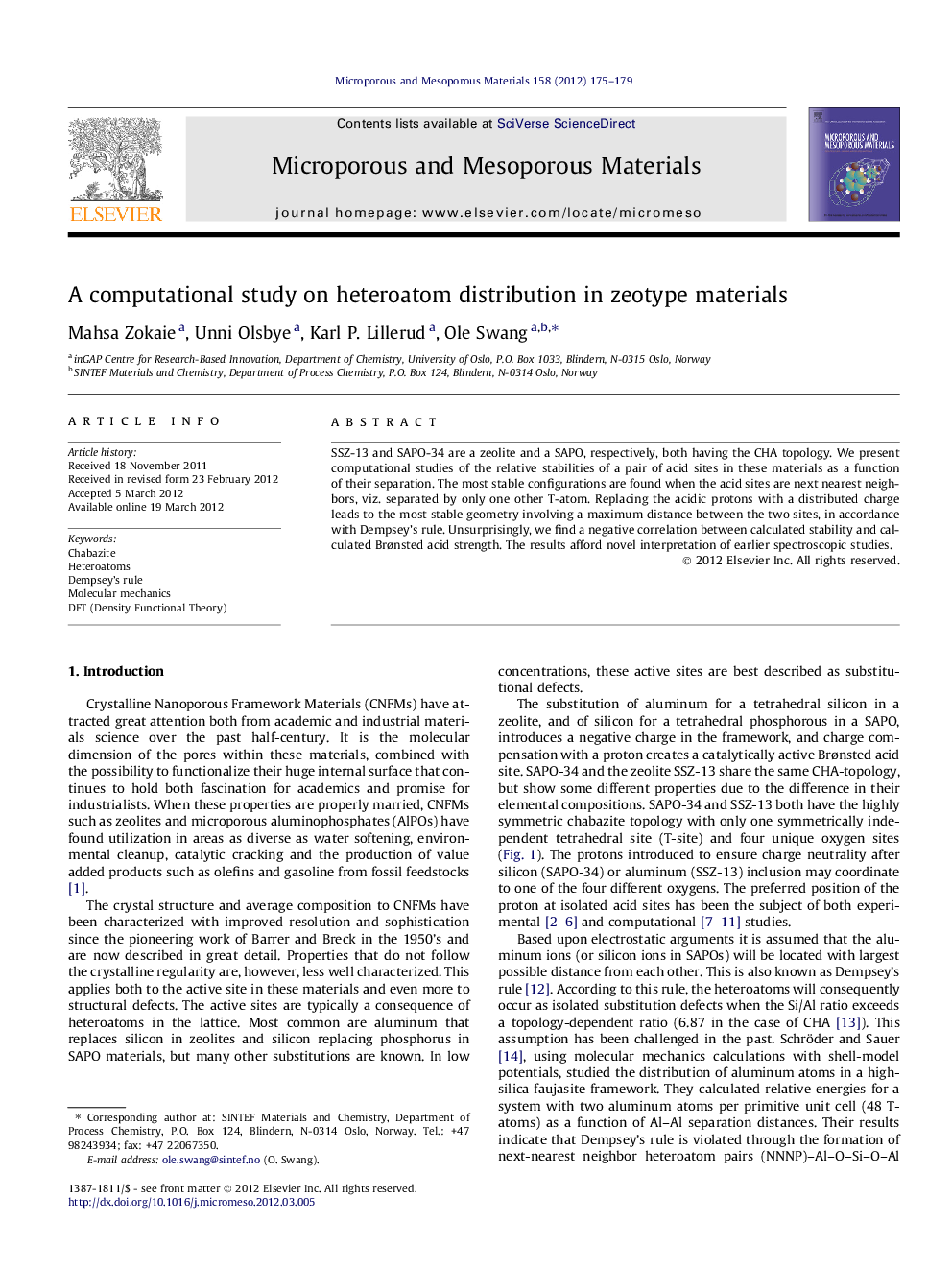| Article ID | Journal | Published Year | Pages | File Type |
|---|---|---|---|---|
| 74366 | Microporous and Mesoporous Materials | 2012 | 5 Pages |
SSZ-13 and SAPO-34 are a zeolite and a SAPO, respectively, both having the CHA topology. We present computational studies of the relative stabilities of a pair of acid sites in these materials as a function of their separation. The most stable configurations are found when the acid sites are next nearest neighbors, viz. separated by only one other T-atom. Replacing the acidic protons with a distributed charge leads to the most stable geometry involving a maximum distance between the two sites, in accordance with Dempsey’s rule. Unsurprisingly, we find a negative correlation between calculated stability and calculated Brønsted acid strength. The results afford novel interpretation of earlier spectroscopic studies.
Graphical abstractFigure optionsDownload full-size imageDownload as PowerPoint slideHighlights► Acid sites in a zeolite and a SAPO tend to form next-nearest-neighbor pairs (NNNP). ► This only applies to calcined materials. ► When charge is delocalized by coke or template, NNNPs disappear. ► NNNP sites are less acidic than discrete sites.
